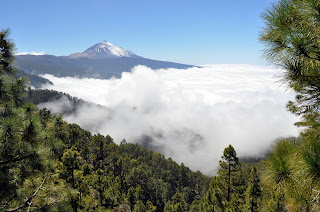Another blog I wrote for dolphin awareness month on the Frontier blog.
Here in the Frontier Tenerife house, as on most projects, we share the cooking duties. One or two people will prepare and cook the food for everyone, and we all eat together. I guess you could call this a kind of cooperative feeding! But March is not volunteer awareness month, so let’s talk about cooperative feeding in dolphins!
Animals which appear to show a high level of intelligence, such as primates and cetaceans, also appear capable of a range of cooperative behaviours including a variety of feeding techniques [
1]. Dolphins face the challenge of not only capturing but first finding small prey items in a vast ocean, and one way of dealing with this is group hunting. Working cooperatively requires a group to act together in some way to the benefit of all, and only works if there is no cheating! [
2]
A number of dolphin species have been observed feeding cooperatively in a variety of ways around the world, including common dolphins (
Delphinus delphis), dusky dolphins (
Lagenorhynchus obscurus), and spinner dolphins (
Stenella longirostris) working together to create dense patches of prey to feed on [2,
3,
4].
One of the resident species here in Tenerife, the bottlenose dolphin (
Tursiops truncatus), is a species which displays a very catholic diet and a range of hunting techniques. In the Bahamas, bottlenose dolphins have been observed feeding cooperatively by swimming quickly in a wide line, with the end dolphins swimming faster to form a circle before diving in synchrony. This action herds fish towards the grassy sea bed where they are more easily captured [
5]. Another cool method of feeding shown by bottlenose dolphins in South Carolina and Georgia is ‘strand-feeding’ where dolphins swim quickly in unison, driving fish ahead of them onto mud banks where they simultaneously strand themselves to pick off the fish [
6]. While a number of dolphin species show cooperative feeding, and bottlenose dolphins show a range of these techniques, they also display a very unusual type; cooperative feeding with role specialization. In other words, individual dolphins within the group have a specific role to play within the hunting event. In Florida groups of bottlenose dolphins work together to herd fish, with one animal acting as the ‘driver’, herding fish towards the ‘barrier’ dolphins. This herding causes the fish to leap into the air to try and escape… right in to the waiting mouths of the dolphins! This behaviour was observed many times, with the ‘driver’ dolphin in each group always being the same animal, therefore showing role specialization [
7].
In a very interesting example of cooperative feeding, some dolphins actually cooperate with human fishermen with both humans and dolphins benefitting from improved prey capture. In southern Brazil, a small artisanal fishing community cooperatively catches mullet with bottlenose dolphins through a series of ritualized behaviours. The fishermen wait in a line while the dolphins drive the fish towards them from the deeper water. The fishermen have learned to watch for the nodding head movements of the dolphins, allowing them to cast their nets at exactly the right moment and in the perfect location, disorienting the fish and allowing the dolphins to more easily catch stray individuals. It is only a small subset of the resident population of bottlenose dolphins in this area which display this behaviour which is learned, and passed on from mother to calf [
8,
9]. A similar cooperative technique occurs in Myanmar, this time with Irrawaddy dolphins (
Orcaella brevirostris), rather than bottlenose. The fishermen attract the dolphins to their canoes with noises and splashes and wait to see if the dolphins will ‘agree’ to fish with them. If so, the dolphins will drive the fish towards the fishermen by swimming in tighter and tighter circles. Catches for the fishermen were always greater during cooperative feeding than non-cooperative, and the fact that the fishery has existed for at least 130 years suggests the dolphins must do pretty well out of it too! [
10]
 |
| credit Telegraph: Bottlenose dolphins and humans fish together in Brazil |
This is barely scratching the surface of another fascinating aspect of cetacean biology, and hints at intelligence and behaviours that we are yet to fully understand in these amazing animals. Just another reason to love dolphins!






























































